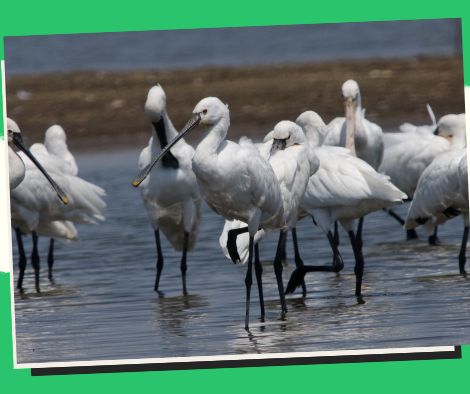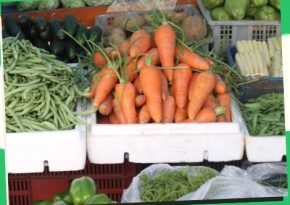
Laoag witnesses rare migratory black-faced spoonbill sightings.
This week, two black-faced spoonbills (Platalea minor), which are endangered worldwide, were observed in this area.
The Department of Environment and Natural Resources (DENR) in Ilocos Norte’s Rhoel Marcelo, an ecosystem management specialist, on Tuesday, showed the media a picture of the birds with their long, black spoon-shaped beak and faces coated in black skin rather than feathers.
The single species with the most constrained range and the only one that is considered to be at risk of extinction globally is the spoonbill, he claimed.
According to Marcelo, Richard Ruiz, a local member of the Wild Bird Club of the Philippines, took the spoonbill’s picture.
During his surveillance of a Barangay Gabu private fish pond frequented by migrating ducks and birds, Ruiz claimed to have spotted two larger birds mingling with a distant flock of smaller Black-winged stilts.
A mandarin duck, another indicator of migratory birds deviating from their typical course, had already been noticed by the birder.
“The DENR monitors several species, including this spoonbill. We are happy that it was seen in the province, and the birds may have come from Hong Kong or mainland China, he added.
There are less than 2,700 Black-faced Spoonbills left in the world, according to the Red List of the International Union for Conservation of Nature (IUCN). In China, Taiwan, North Korea, South Korea, and Japan, they are recognized as endangered species and protected species.
At the Paoay Lake Natural Park in Ilocos Norte on January 13, the DENR and the Wild Bird Club of the Philippines performed the Asian Waterbird Census.
Several bird species frequent the Paoay Lake, including the Little Grebe, Great Egret, Little Egret, Cattle Egret, Philippine Duck, Tufted Duck, White-browed Crake, Common Kingfisher, White-collared Kingfisher, White-throated Kingfisher, and Great Cormorant, according to the most recent bird census.
This year, 3,792 waterbirds from 22 species were counted, according to Marcelo.
In addition to a returning Whiskered Tern, which was last seen at the Paoay Lake wetlands in 2015 and 2016, Marcelo stated they were able to record new migrants this year, including the Brown Booby and the Cinnamon Bittern, compared to last year’s 3,794 migrants.
According to the DENR, one of the most important markers of whether wetlands, such as mangrove regions, are still ecologically healthy is the presence of waterbirds.
Save/Share this story with QR CODE
Disclaimer
This article is for informational purposes only and does not constitute endorsement of any specific technologies or methodologies and financial advice or endorsement of any specific products or services.
📩 Need to get in touch?
📩 Feel free to Contact NextGenDay.com for comments, suggestions, reviews, or anything else.
We appreciate your reading. 😊Simple Ways To Say Thanks & Support Us:
1.) ❤️GIVE A TIP. Send a small donation thru Paypal😊❤️
Your DONATION will be used to fund and maintain NEXTGENDAY.com
Subscribers in the Philippines can make donations to mobile number 0917 906 3081, thru GCash.
3.) 🛒 BUY or SIGN UP to our AFFILIATE PARTNERS.
4.) 👍 Give this news article a THUMBS UP, and Leave a Comment (at Least Five Words).
AFFILIATE PARTNERS

World Class Nutritional Supplements - Buy Highest Quality Products, Purest Most Healthy Ingredients, Direct to your Door! Up to 90% OFF.
Join LiveGood Today - A company created to satisfy the world's most demanding leaders and entrepreneurs, with the best compensation plan today.



 Business Technology, Finance Technology & Information Technology
Business Technology, Finance Technology & Information Technology





